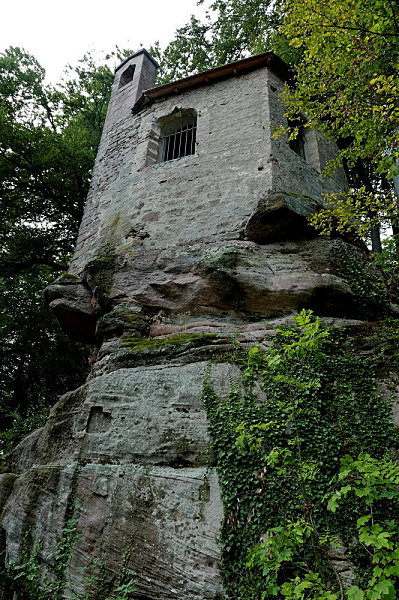Château De Bruyères on:
[Wikipedia]
[Google]
[Amazon]
The château de Bruyères is a ruined castle located in the town of
- It is said that Emperor Henri VI stayed there for hunting, in 1196. The castle was destroyed by fire in 1715.
 The castle had a rectangular shape; in the centre, the
The castle had a rectangular shape; in the centre, the
Château de Bruyères
at Bruyères website {{DEFAULTSORT:Bruyeres, Chateau Ruined castles in Grand Est Buildings and structures in Vosges (department)
Bruyères
Bruyères () is a commune in the Vosges department in Grand Est in northeastern France.
The town built up around a castle built on a hill in the locality in the 6th century. It was the birthplace of Jean Lurçat, in 1892.
History
In World W ...
, in the Vosges
The Vosges ( , ; ; Franconian and ) is a range of medium mountains in Eastern France, near its border with Germany. Together with the Palatine Forest to the north on the German side of the border, they form a single geomorphological unit and ...
department of eastern France
France, officially the French Republic, is a country located primarily in Western Europe. Overseas France, Its overseas regions and territories include French Guiana in South America, Saint Pierre and Miquelon in the Atlantic Ocean#North Atlan ...
.
History
The castle was built during the 10th century by theDuke of Lorraine
The kings and dukes of Lorraine have held different posts under different governments over different regions, since its creation as the kingdom of Lotharingia by the Treaty of Prüm, in 855. The first rulers of the newly established region were ...
, on a small hill. According to the local history, the site has been fortified in the 6th century by a son of Clodio, King of the Franks
file:Frankish arms.JPG, Aristocratic Frankish burial items from the Merovingian dynasty
The Franks ( or ; ; ) were originally a group of Germanic peoples who lived near the Rhine river, Rhine-river military border of Germania Inferior, which wa ...
.
Around 1178, Frederick I, Duke of Lorraine
Frederick I ( or ) (c. 1143 – 7 April 1206) was the duke of Lorraine from 1205 to his death. He was the second son of Matthias I and Bertha (also called Judith), daughter of Frederick II, Duke of Swabia. He succeeded his brother, Simon II, ...
took over the castle and several domains and returned it to his elder brother, Simon II, Duke of Lorraine
Simon II (1140 – 4 January 1207) was the Duke of Lorraine from 1176 to 1205. He was the son and successor of Matthias I and Bertha (also called Judith), daughter of Frederick II, Duke of Swabia.
His mother wished for her second son, Frederi ...
after the Treaty of Ribemont (1179)
The Treaty of Ribemont was signed on 2 May 1179 by the two eldest sons of the late Duke Matthias I of Lorraine. Matthias had died in 1176, without having laid down plans for his succession, and his duchy was claimed by his eldest son, Simon, and ...
.- It is said that Emperor Henri VI stayed there for hunting, in 1196. The castle was destroyed by fire in 1715.
Description
 The castle had a rectangular shape; in the centre, the
The castle had a rectangular shape; in the centre, the keep
A keep is a type of fortified tower built within castles during the Middle Ages by European nobility. Scholars have debated the scope of the word ''keep'', but usually consider it to refer to large towers in castles that were fortified residen ...
was protected by two ''enceinte
Enceinte (from Latin ''incinctus'' "girdled, surrounded") is a French term that refers to the "main defensive enclosure of a fortification". For a castle, this is the main defensive line of wall towers and curtain walls enclosing the positio ...
s''. One of the two entrances was fortified by a large tower, named ''la Cabée''.
The chapel, dedicated to Saint Blaise
Blaise of Sebaste (, ''Hágios Blásios''; martyred 316 AD) was a physician and bishop of Sivas, Sebastea in historical Lesser Armenia (modern Sivas, Turkey) who is venerated as a Christian saint and martyr. He is counted as one of the Fourteen ...
, is the last building still standing, in the east of the plateau.
See also
*List of castles in France
This is a list of castles in France, arranged by Regions of France, region and Departments of France, department.
;Notes:
# The French word ''château'' has a wider meaning than the English ''castle'': it includes architectural entities that are p ...
References
External links
Château de Bruyères
at Bruyères website {{DEFAULTSORT:Bruyeres, Chateau Ruined castles in Grand Est Buildings and structures in Vosges (department)